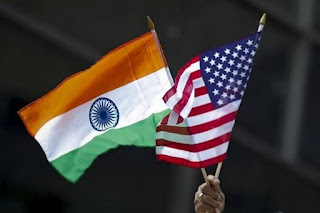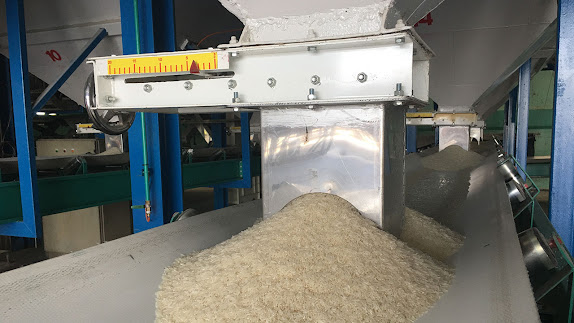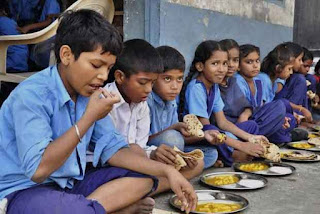Have you ever considered posing for a photo with a
Chimpanzee? Can you imagine clicking a picture when a crocodile is about to
trap you? Would you be grinning by then? What if a villainous character, Joker,
approaches you with funny tricks? Click art museum facility is exciting when
you want to spend fun time with friends. It is under the roof of VGP Snow
Kingdom, Injambakkam.
A renowned artist, A P Shreethar, conceptualized the museum
with interactive 3D and optical illusions. The Click art in Chennai is the
first of its kind in the country.
Know why Click Art stands unique? A billboard about
Shreethar at the museum quoted, “This museum is not like other exhibitions
where you cannot touch the exhibits. Here, you can have your pictures clicked,
touch the exhibits and bring out the actor or director in you.”
Madhu Balaji is in conversation with Madame Kala Shreethar,
COO of Click Art Museum.
We couldn’t use the same name. The concept is the same, Trick Art and
Click Art. Since we focused on ‘clicking pictures’, we came up with a new name.
Where was the first Click Art museum opened?
We started working on our project four years before we established the
museum in Chennai. We started on April 14, 2016.
Chennai and Bengaluru are people of mixed culture, and we also belong
to Chennai. So we implemented our project first in Chennai.
How did the idea originate?
We are not the first to open worldwide. But, we are the pioneers in
India. We started it first in India. But before us, there was a Korean company
focusing on Trick Art. The concept we work is also Trick Art. The company
ventured the same thing, and they started five years before our project took
shape. They are operating in various places, exhibiting the same paintings.
It is hard for the painters. They will have to relocate and work for
eight to nine months. It takes a year to complete a painting. From then, a
focus on commercialising is also vital. This practice will not work for a
country like ours, India. They charge around 11 crores. Investing huge money in
crores, taking one year time and also they charged thirty percent of royalty on
the collections. The company registered a patent for the ‘Trick Art Museum’ in
India also.
What distinguishes Click Art Museum from the Korean Company ‘TRICK
ART’? What’s our ‘trick’?
We are digital-driven and it is unique. The other company had their
painters visit the venue and paint directly on the wall. It is time-consuming.
All these eight years, they only had the same paintings. If they have to change
the collections, they have to close the museum for at least one year. That’s
the issue.
There is another issue. In foreign countries, if we tell the people
not to touch the wall or the painting, they never do. But here in India, even
if we tell them not to touch the painting, they will.
We thought of an alternative to all these issues. This is how the idea
for digitalization emerged. To go a long way, we had a tie-up with 3M
people. That technology worked, and we went with them. We managed to come up
with paintings in a week. If someone is looking to open a museum as a franchise
also, having a place of 1000 or 800 sqft., they can set up a museum within a
week.
When a kid visits our museum and scribbles on our paintings, we have
the technology to undo the same overnight. Our business would not be spoiled
because of that.
Tell us more on the collaboration with 3M People
3M People does the lamination for our paintings. It is a type of paper
that we use. When they scribble on a painting, we can wash it with water.
Whatever we did was unique, be it the technology, the paper we used and the
artwork itself.
We never feel art like foreign and we never auction as they do. Almost
all of us are more connected to various forms of art.
We have just given a new form to the already existing one.
How has Click Art grown over time?
Right now, Click Art is operating in around 23 venues,
including both permanent and temporary museums. We are looking forward to some
international collaborations too. Presently, we have our establishment only in
Singapore. We are trying to reach other countries also. So after two or three
months, when things start settling, we will go ahead. We are not in a position
to travel anywhere due to these covid lockdowns.
The situation won’t work for ‘CLICK’ ART because here people
come to take photographs. ‘With mask,’ it is not possible.
How are the responses to Click Art museums?
Considering every gallery and permanent museums of Click
Art, Chennai has had an enormous reach. Chennai received the BEST. Among our
temporary museum set-up, what we found surprising was the one held at Kannur
during 2019. It was a week-long exhibition before the Onam festival. Around
twenty-five lakhs of people visited on the day of Onam. However, on other days
too, it had continued to be between fifteen to twenty lakhs. It was a temporary
museum, and we did not expect this much response. It was a super-duper hit.
As far as permanent museums are concerned, Chennai is the
place that is well-received. People in Chennai easily connect to art and
culture. Probably that would be the reason for success.
Are we operational in other cities in India?
Right now, we are closed due to the pandemic and lockdowns. Otherwise,
we are operating in Mumbai (Ghatkopar), Bengaluru, and Delhi (Rohini).
Are the art collections the same as in Chennai?
Click Art has around 400 paintings till today. Our idea is to change
the paintings every year. We will not be able to attract a regular crowd with
the same paintings. We also work on customized paintings. Certain universal
concepts are always the same. But culture-oriented ones, we customize them
based on the venue.
What are the other initiatives/ activities by Click Art?
Other than Click Art, we have another concept called Live Art Museum.
Have you heard of Madame Tussauds pioneering wax statues? We work on Silicon
statues. A demerit of wax statues is that they do not suit our temperature. The
mould also changes after one or two years and wax is also not consistent with
our temperature here. These are the reasons why Madame Tussauds could not reach
here. The cost involved in making a statue is 4 crore. It does not work for a
country like us too! We wanted to bring that margin lower. We managed to bring
it around 15-18 lakh with silicon mould and fibre finish.
Shreethar is both creator and painter himself. When it comes to
statutes and structure, it is a team work by 14 members. We will complete a
statue in three to four months. We have a museum for the same here in Chennai
containing statues of known personalities.
Shreethar has also worked on two silicon statues of Dr APJ Abdul Kalam
which are kept at his memorial in Rameshwaram. One in standing posture, and the
other like he is at the President desk. 96 paintings by Sreethar were
displayed.
How is Click Art Museum coping up with Covid
lockdowns?
Except for the footfalls, it is not impacting us. We
have to hold hands and overcome them together. Even if we don’t earn this year
but survive, we win.
What are the future projects lined up for Click Art?
We are working on a Goa tourism project. We have not
travelled so far. It will be for museums and also exhibiting a collection of
vintage cameras. We already have one vintage camera museum in Singapore. We are
working on many museum projects. We hope to stand unique.





